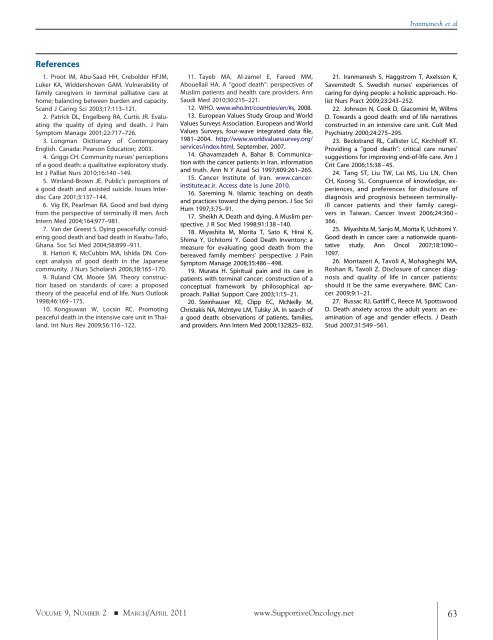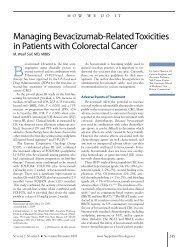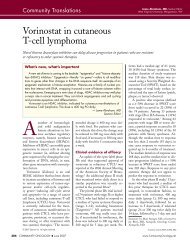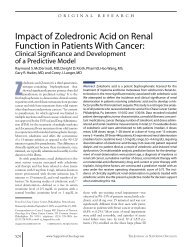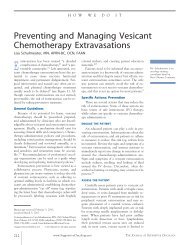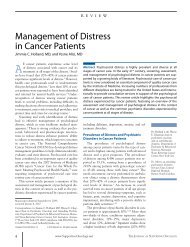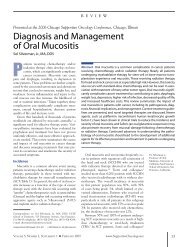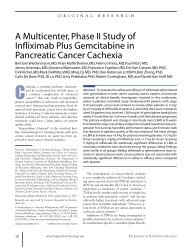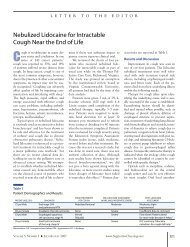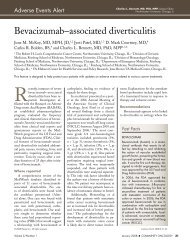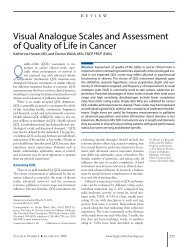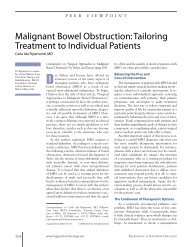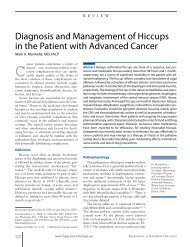Evaluating the “Good Death” Concept from Iranian Bereaved Family
Evaluating the “Good Death” Concept from Iranian Bereaved Family
Evaluating the “Good Death” Concept from Iranian Bereaved Family
You also want an ePaper? Increase the reach of your titles
YUMPU automatically turns print PDFs into web optimized ePapers that Google loves.
References<br />
1. Proot IM, Abu-Saad HH, Crebolder HFJM,<br />
Luker KA, Widdershoven GAM. Vulnerability of<br />
family caregivers in terminal palliative care at<br />
home; balancing between burden and capacity.<br />
Scand J Caring Sci 2003;17:113–121.<br />
2. Patrick DL, Engelberg RA, Curtis JR. <strong>Evaluating</strong><br />
<strong>the</strong> quality of dying and death. J Pain<br />
Symptom Manage 2001;22:717–726.<br />
3. Longman Dictionary of Contemporary<br />
English. Canada: Pearson Education; 2003.<br />
4. Griggs CH. Community nurses’ perceptions<br />
of a good death: a qualitative exploratory study.<br />
Int J Palliat Nurs 2010;16:140–149.<br />
5. Winland-Brown JE. Public’s perceptions of<br />
a good death and assisted suicide. Issues Interdisc<br />
Care 2001;3:137–144.<br />
6. Vig EK, Pearlman RA. Good and bad dying<br />
<strong>from</strong> <strong>the</strong> perspective of terminally ill men. Arch<br />
Intern Med 2004;164:977–981.<br />
7. Van der Greest S. Dying peacefully: considering<br />
good death and bad death in Kwahu-Tafo,<br />
Ghana. Soc Sci Med 2004;58:899–911.<br />
8. Hattori K, McCubbin MA, Ishida DN. <strong>Concept</strong><br />
analysis of good death in <strong>the</strong> Japanese<br />
community. J Nurs Scholarsh 2006;38:165–170.<br />
9. Ruland CM, Moore SM. Theory construction<br />
based on standards of care: a proposed<br />
<strong>the</strong>ory of <strong>the</strong> peaceful end of life. Nurs Outlook<br />
1998;46:169–175.<br />
10. Kongsuwan W, Locsin RC. Promoting<br />
peaceful death in <strong>the</strong> intensive care unit in Thailand.<br />
Int Nurs Rev 2009;56:116–122.<br />
11. Tayeb MA, Al-zamel E, Fareed MM,<br />
Abouellail HA. A ”good death”: perspectives of<br />
Muslim patients and health care providers. Ann<br />
Saudi Med 2010;30:215–221.<br />
12. WHO. www.who.Int/countries/en/#s, 2008.<br />
13. European Values Study Group and World<br />
Values Surveys Association. European and World<br />
Values Surveys, four-wave integrated data file,<br />
1981–2004. http://www.worldvaluessurvey.org/<br />
services/index.html, September, 2007.<br />
14. Ghavamzadeh A, Bahar B. Communication<br />
with <strong>the</strong> cancer patients in Iran, information<br />
and truth. Ann N Y Acad Sci 1997;809:261–265.<br />
15. Cancer Institute of Iran. www.cancerinstitute.ac.ir.<br />
Access date is June 2010.<br />
16. Sareming N. Islamic teaching on death<br />
and practices toward <strong>the</strong> dying person. J Soc Sci<br />
Hum 1997;3:75–91.<br />
17. Sheikh A. Death and dying. A Muslim perspective.<br />
J R Soc Med 1998;91:138–140.<br />
18. Miyashita M, Morita T, Sato K, Hirai K,<br />
Shima Y, Uchitomi Y. Good Death Inventory: a<br />
measure for evaluating good death <strong>from</strong> <strong>the</strong><br />
bereaved family members’ perspective. J Pain<br />
Symptom Manage 2008;35:486–498.<br />
19. Murata H. Spiritual pain and its care in<br />
patients with terminal cancer: construction of a<br />
conceptual framework by philosophical approach.<br />
Palliat Support Care 2003;1:15–21.<br />
20. Steinhauser KE, Clipp EC, McNeilly M,<br />
Christakis NA, McIntyre LM, Tulsky JA. In search of<br />
a good death: observations of patients, families,<br />
and providers. Ann Intern Med 2000;132:825–832.<br />
Iranmanesh et al<br />
21. Iranmanesh S, Haggstrom T, Axelsson K,<br />
Savenstedt S. Swedish nurses’ experiences of<br />
caring for dying people: a holistic approach. Holist<br />
Nurs Pract 2009;23:243–252.<br />
22. Johnson N, Cook D, Giacomini M, Willms<br />
D. Towards a good death: end of life narratives<br />
constructed in an intensive care unit. Cult Med<br />
Psychiatry 2000;24:275–295.<br />
23. Beckstrand RL, Callister LC, Kirchhoff KT.<br />
Providing a ”good death”: critical care nurses’<br />
suggestions for improving end-of-life care. Am J<br />
Crit Care 2006;15:38–45.<br />
24. Tang ST, Liu TW, Lai MS, Liu LN, Chen<br />
CH, Koong SL. Congruence of knowledge, experiences,<br />
and preferences for disclosure of<br />
diagnosis and prognosis between terminallyill<br />
cancer patients and <strong>the</strong>ir family caregivers<br />
in Taiwan. Cancer Invest 2006;24:360–<br />
366.<br />
25. Miyashita M, Sanjo M, Morita K, Uchitomi Y.<br />
Good death in cancer care: a nationwide quantitative<br />
study. Ann Oncol 2007;18:1090–<br />
1097.<br />
26. Montazeri A, Tavoli A, Mohagheghi MA,<br />
Roshan R, Tavoli Z. Disclosure of cancer diagnosis<br />
and quality of life in cancer patients:<br />
should it be <strong>the</strong> same everywhere. BMC Cancer<br />
2009;9:1–21.<br />
27. Russac RJ, Gatliff C, Reece M, Spottswood<br />
D. Death anxiety across <strong>the</strong> adult years: an examination<br />
of age and gender effects. J Death<br />
Stud 2007;31:549–561.<br />
VOLUME 9, NUMBER 2 � MARCH/APRIL 2011 www.SupportiveOncology.net 63


